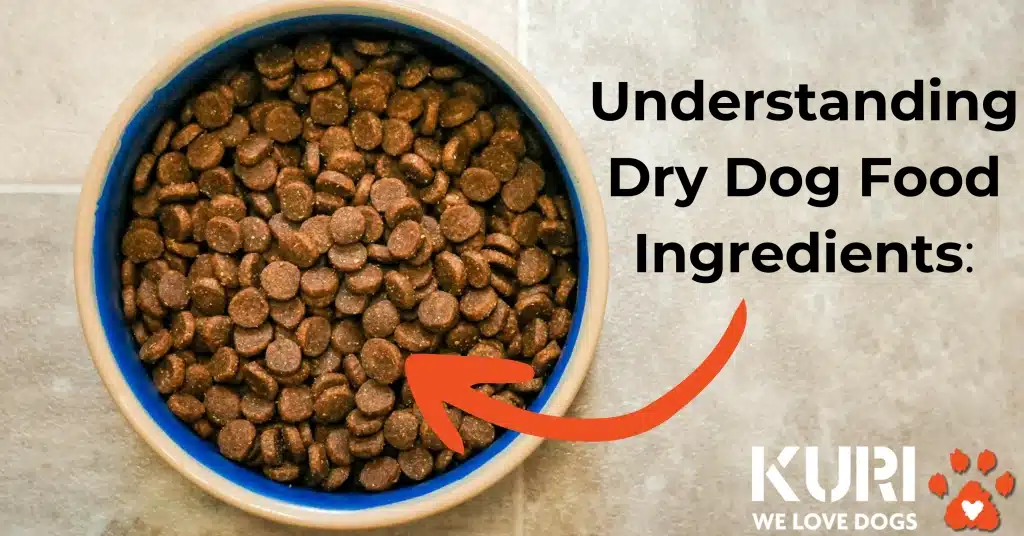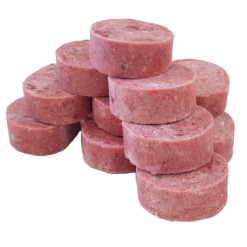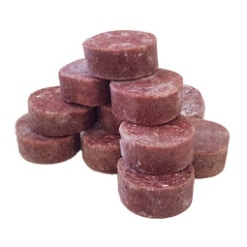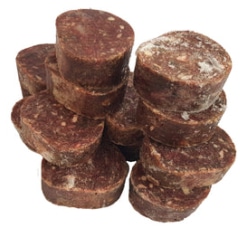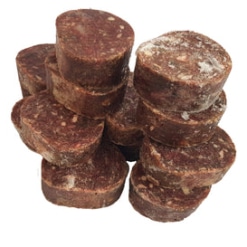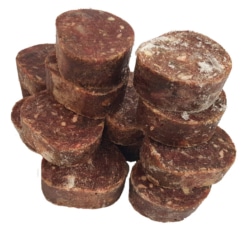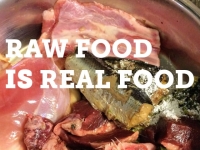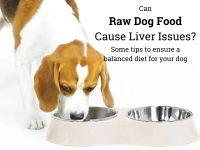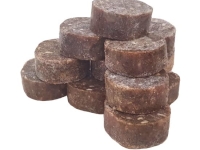Understanding Dry Dog Food Ingredients: A Guide to Choosing the Best Dog Food
In This Article...
THE OVERVIEW...
A Guide to Dog Food Ingredients and Reading Dog Food Labels
Choosing the right dog food can be overwhelming, especially with the myriad of options available on the market. Understanding dog food ingredients and how to read dog food labels is crucial for dog owners who want to ensure their pets receive the best diet possible. I hope this article will make it easier for you to choose quality food that meets your dog’s needs.
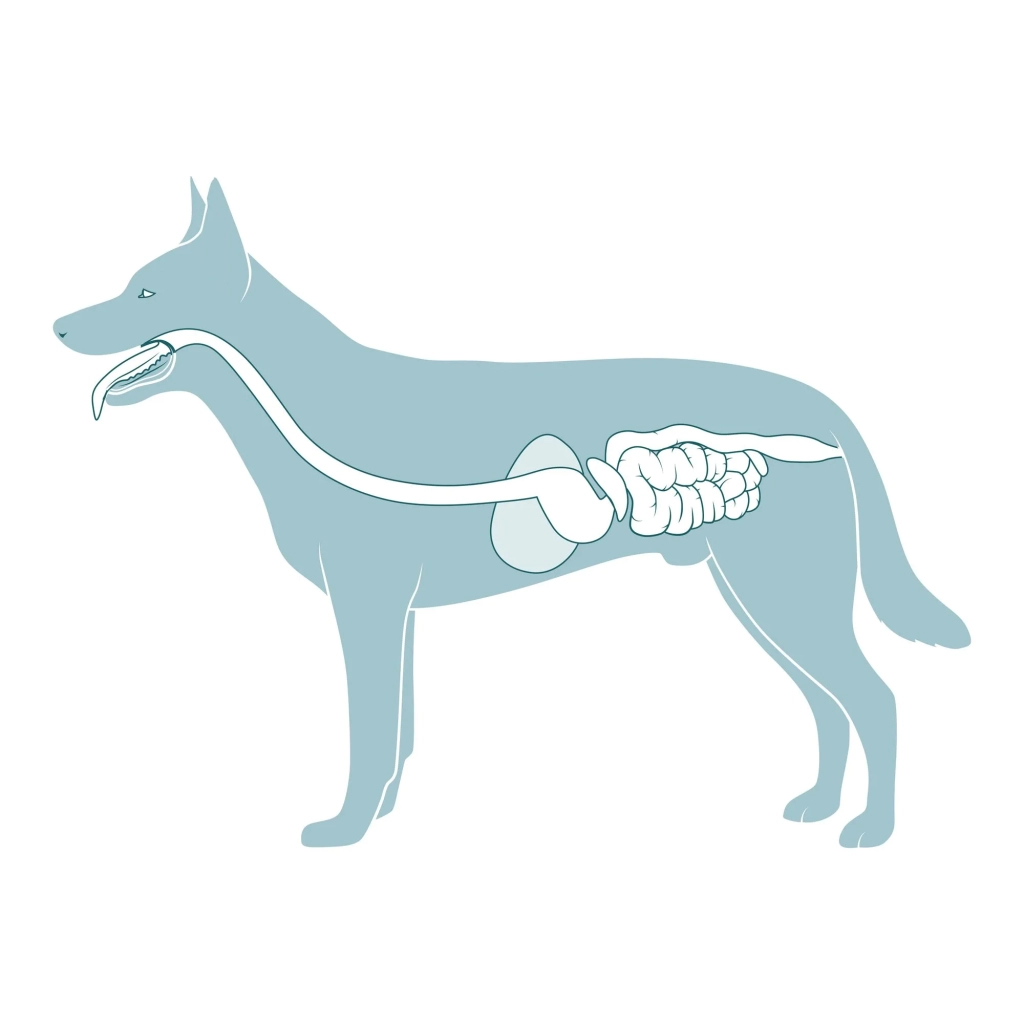
Understanding Dry Dog Food Ingredients
Proteins
Animal-based Proteins
Animal-based proteins are essential for your dog’s diet as they provide the necessary amino acids that dogs need. Ingredients like chicken, beef, and fish meal are common sources of these proteins. These proteins are not only digestible but also support muscle development and overall health. When selecting dog food, look for high-quality animal-based proteins listed among the top 5 ingredients. This ensures your dog gets the nutrients they need to maintain a healthy digestive system and energy levels.
Moreover, animal-based proteins are often more palatable for dogs, making mealtime enjoyable. They also contain vital nutrients such as omega-3 fatty acids, which are beneficial for skin and coat health. When evaluating dog food, consider the source of the protein; whole meat is preferable to meat by-products.
Best selling products
-
Lamb and Salmon Raw Dog Food
$14.99 – $52.99Price range: $14.99 through $52.99 Price including 15% GST — or from $13.49 – $47.69Price range: $13.49 through $47.69 Price including 15% GST every 2 weeks -
Chicken, Heart and Tripe Raw Dog Food
$14.99 – $52.99Price range: $14.99 through $52.99 Price including 15% GST — or from $13.49 – $47.69Price range: $13.49 through $47.69 Price including 15% GST every 2 weeks -
Rabbit, Heart and Tripe Raw Dog Food
$15.50 – $57.99Price range: $15.50 through $57.99 Price including 15% GST — or from $13.95 – $52.19Price range: $13.95 through $52.19 Price including 15% GST every 2 weeks -
Game Heart and Tripe Raw Dog Food
$56.99 Price including 15% GST — or$56.99Original price was: $56.99.$51.29Current price is: $51.29. Price including 15% GST every 2 weeks -
Venison, Heart and Tripe Raw Dog Food
$15.99 – $58.50Price range: $15.99 through $58.50 Price including 15% GST — or from $14.39 – $52.65Price range: $14.39 through $52.65 Price including 15% GST every 2 weeks
Plant-based Proteins
Plant-based proteins can also play a role in your dog’s diet, providing additional nutrients and fibre. Ingredients like peas, lentils, and chickpeas are often included in dog food as protein sources. While they may not provide all the essential amino acids found in animal proteins, they can still be beneficial when combined with other ingredients. It’s important to ensure that the dog food you choose has a balanced mix of both animal and plant-based proteins for optimal nutrition.
Plant-based proteins can help support your dog’s digestive system and provide energy. However, they should not be the primary source of protein in your dog’s food. Always check the ingredient list to ensure that high-quality animal proteins are the main focus. By incorporating plant-based proteins wisely, you can enhance the overall nutrient profile of your dog’s food.
Carbohydrates
Carbohydrates are another essential component of dog food ingredients, providing energy and aiding in digestion. Ingredients like kumara (sweet potato) is an excellent source of carbohydrates. Whole food ingredients not only supply energy but also contain fibre, which is beneficial for a healthy digestive system. When selecting dog food, it’s important to choose options that include high-quality carbohydrates rather than fillers, which can lead to digestive issues.
Whole food carbohydrates can also help improve gut heath, making them a good choice for dogs. Additionally, they can contribute to a feeling of fullness, preventing overeating. Always look for dog food that lists whole food carbohydrates among its top ingredients, ensuring your dog gets the energy they need without unnecessary fillers. By prioritising quality carbohydrates, you can support your dog’s overall health and well-being.
Fats
Fats are a crucial part of your dog’s diet, providing energy and supporting cell function. Healthy fats, such as chicken fat and fish oil, are rich in omega-3 fatty acids, which are known for their anti-inflammatory properties. These fats not only help maintain a shiny coat but also support brain health and overall vitality. When choosing dog food, look for high-quality fat sources listed in the ingredient list to ensure your dog receives the benefits of healthy fats.
In addition to providing energy, fats play a role in nutrient absorption, helping your dog get the most out of their food. It’s essential to strike a balance, as too much fat can lead to obesity, while too little can result in a lack of energy. Always check the fat content in the guaranteed analysis section of the dog food label to ensure it meets your dog’s needs. By including healthy fats in your dog’s diet, you can promote optimal health and longevity.
Water
Water is often overlooked but is a vital ingredient in your dog’s food. It plays a significant role in digestion, nutrient absorption, and overall health. While dry dog food typically contains less moisture, wet or canned dog food has a higher water content, which can be beneficial for hydration. Ensuring your dog has access to fresh water at all times is crucial, especially if they consume primarily dry food.
Hydration is essential for maintaining a healthy digestive system and preventing urinary tract issues. If your dog is not drinking enough water, consider incorporating wet food into their diet or adding water to their dry food. This can help improve their hydration levels and overall well-being. Always prioritise water as a key component of your dog’s diet, as it is essential for their health and vitality.

Vitamins and Minerals
Vitamins and minerals are essential nutrients that support various bodily functions in dogs. Ingredients like carrots, spinach, and blueberries are rich in vitamins A, C, and K, which contribute to immune health and overall vitality. Minerals such as calcium and phosphorus are crucial for bone health, while zinc and iron support skin and coat health. When selecting dog food, look for a balanced blend of vitamins and minerals to ensure your dog receives comprehensive nutrition.
Many commercial dog foods are fortified with vitamins and minerals to meet the nutritional needs of dogs. However, it’s important to choose high-quality dog food that sources these nutrients from whole food ingredients rather than synthetic additives. By prioritising dog food rich in natural vitamins and minerals, you can support your dog’s overall health and help them thrive. Always check the ingredient list and guaranteed analysis to ensure your dog is getting the nutrients they need. You need to be mindful too that if manufacturers include whole ingredients in their recipes that they are above the “salt line” to have any real value (more about this later).

Preservatives, Probiotics, and More
Preservatives are often added to dog food to extend shelf life and maintain freshness. While some preservatives are natural, like tocopherols (vitamin E), others can be synthetic and may not be ideal for your dog’s health. It’s essential to choose dog food with natural preservatives to avoid potential health risks. Additionally, probiotics can be beneficial for your dog’s digestive system, promoting gut health and overall well-being.
When selecting dog food, consider the inclusion of probiotics and other beneficial ingredients that support your dog’s health. Ingredients like chicory root and fermented foods can enhance digestion and nutrient absorption. Always read the ingredient list carefully to ensure you’re choosing quality food that prioritizes your dog’s health. By being mindful of preservatives and seeking out beneficial ingredients, you can help your dog maintain optimal health and vitality.
Ingredients To Avoid in Dry Dog Food
By-products
By-products are often considered low-quality ingredients in dog food. They can include parts of animals that are not typically consumed by humans, such as feathers, hooves, and organs. While some organ meats can be nutritious, many by-products lack the essential nutrients your dog needs. When evaluating dog food, it’s best to avoid products that list by-products as primary ingredients, as they may not provide the quality nutrition your dog deserves.
Choosing dog food that has whole meat sources over by-products ensures your dog receives high-quality protein and essential nutrients. Always read the ingredient list carefully and look for specific meat sources rather than vague terms like “meat by-product.” By avoiding by-products, you can help ensure your dog gets the best diet possible, supporting their overall health and well-being.
Artificial Colours, Flavours, and Preservatives
Artificial colours, flavours, and preservatives are commonly found in many commercial pet foods, but they can pose potential health risks for your dog. These additives are often used to enhance the appearance and taste of the food, but they provide no nutritional value. Instead, they can lead to allergic reactions and other health issues in sensitive dogs. It’s essential to choose dog food that is free from artificial additives to promote your dog’s health.
Opting for natural food options can help ensure your dog receives quality nutrition without the risks associated with artificial ingredients. Look for dog food that uses natural flavours derived from whole food ingredients and it isn’t even worth considering coloured dog food.

Generic Fats and Proteins
Generic fats and proteins can be a red flag when it comes to choosing dog food. Ingredients like “meat meal” or “animal fat” do not specify the source, making it difficult to assess the quality of the protein and fat content. These vague terms can indicate lower-quality ingredients that may not provide the essential nutrients your dog needs. If your dog food includes meal or oil of some description, make sure that it is a specific source of protein and fat, such as “chicken meal” or “salmon oil,” to ensure your dog is getting quality nutrition.
By avoiding generic fats and proteins, you can help ensure your dog receives the best diet possible. High-quality protein sources support muscle development and overall health, while healthy fats contribute to energy and coat condition. Always read the ingredient list carefully and look for dog food that clearly specifies the sources of protein and fat.
Sweeteners
Sweeteners are often added to dog food to enhance flavour, but they can be detrimental to your dog’s health. Ingredients like corn syrup and sugar can lead to obesity and dental issues in dogs. It’s essential to avoid dog food that contains added sweeteners, as they provide no nutritional value and can contribute to long-term health problems. Instead, look for dog food that uses natural flavours derived from whole food ingredients.
Choosing dog food without added sweeteners will help support your dog’s overall health and well-being. Natural flavours from meat and vegetables can provide the taste dogs love without the negative effects of added sugars.
Fillers

Fillers are often used in dog food to bulk up the product, but they provide little to no nutritional value. Ingredients like corn, wheat, and soy are common fillers that can lead to digestive issues and allergies in some dogs. It’s essential to avoid dog food that contains fillers, as they can detract from the overall quality of the food. Instead, look for dog food that prioritises whole food ingredients and high-quality protein sources.
The Salt Divider
What is the Salt Divide?

The Salt Divide refers to a boundary in the pet food industry that influences the types of ingredients used in dog foods. According to regulation salt can only be 1% of the total food, so anything after the salt is less that 1% of the food. The larger manufacturers will often include “super food” ingredients in their recipes but after the salt meaning that it is makes up less that 1% of the total dog food. These super foods are in such low concentrations that they have little nutritional value.
Salt can be listed under various names on dog food labels, including sodium chloride, sea salt, and rock salt. Understanding these terms can help you make informed decisions when selecting pet food.
How To Read a Dog Food Label
Guaranteed Analysis
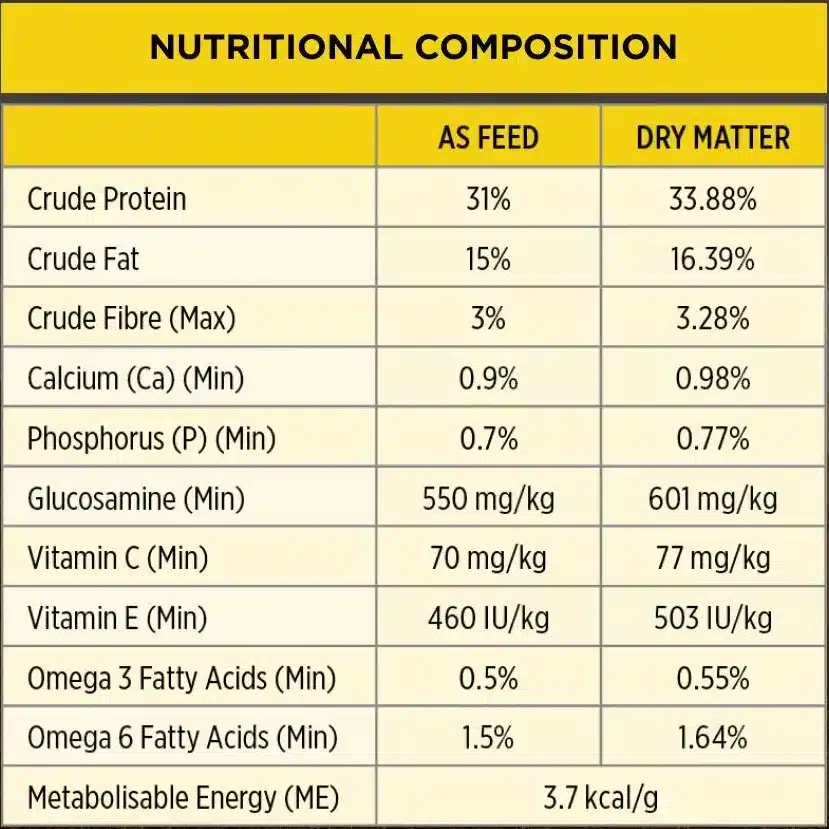
The guaranteed analysis on a dog food label provides important information about the nutritional content of the food. It typically includes percentages of protein, fat, fibre, and moisture. Understanding this information is crucial for dog owners to ensure their pets receive a balanced diet. When evaluating dog food, compare the guaranteed analysis to your dog’s specific needs, taking into account their age, size, and activity level.
By understanding the guaranteed analysis, you can make informed decisions about your dog’s food. For example, active dogs may require higher protein and fat levels, while less active dogs may need lower amounts. Always refer to the guaranteed analysis when selecting dog food to ensure it meets your dog’s dietary requirements. By being mindful of these details, you can help support your dog’s health and well-being.
Ingredients List
The ingredients list on a dog food label is one of the most important aspects to consider when choosing food for your pet. Ingredients are listed in descending order by weight, meaning the first few ingredients are the most significant. Always look for high-quality protein sources at the top of the list, followed by whole food carbohydrates and healthy fats. Avoid products that list fillers or vague terms like “meat by-products” as primary ingredients.
Best By or Expiration Date
The best by or expiration date on dog food labels is crucial for ensuring food safety. Always check this date before purchasing or feeding your dog food, as expired products can lead to health issues. Freshness is essential for maintaining the nutritional quality of the food, so choose products that are within their shelf life. If you’re unsure about the freshness of a product, it’s best to err on the side of caution and select a different option.
How To Choose the Right Dog Food
What should the first five ingredients in dog food be?
The first five ingredients in dog food are crucial indicators of the food’s quality. Ideally, the top ingredients should include high-quality protein sources, whole food carbohydrates, and healthy fats. Look for specific meats like chicken or beef, followed by whole grains or vegetables. Avoid products that list fillers or vague terms like “meat by-products” as primary ingredients, as these can detract from the overall quality of the food.
What’s the difference between whole food ingredients and processed ingredients?
Whole food ingredients are minimally processed and retain their natural nutrients, while processed ingredients often undergo significant alterations that can diminish their nutritional value. Whole foods, such as fresh meats, vegetables, and grains,
Are raw diets better for my dog?
This question has become increasingly popular among pet owners who want to provide the best nutrition for their furry friends. At Kuri we are proponents of raw diets and argue that feeding dogs raw meat, bones, fruits, and vegetables aligns more closely with their ancestral eating habits. We believe that such diets can lead to improved coat condition, healthier skin, increased energy levels, and better dental health.
Ultimately, the decision to switch to a raw diet should be made with careful consideration and advice. Whether you choose a raw diet or a commercial dog food, the key is to ensure that your dog receives a balanced and nutritious diet tailored to their individual needs.
Best selling products
-
Lamb and Salmon Raw Dog Food
$14.99 – $52.99Price range: $14.99 through $52.99 Price including 15% GST — or from $13.49 – $47.69Price range: $13.49 through $47.69 Price including 15% GST every 2 weeks -
Chicken, Heart and Tripe Raw Dog Food
$14.99 – $52.99Price range: $14.99 through $52.99 Price including 15% GST — or from $13.49 – $47.69Price range: $13.49 through $47.69 Price including 15% GST every 2 weeks -
Rabbit, Heart and Tripe Raw Dog Food
$15.50 – $57.99Price range: $15.50 through $57.99 Price including 15% GST — or from $13.95 – $52.19Price range: $13.95 through $52.19 Price including 15% GST every 2 weeks -
Game Heart and Tripe Raw Dog Food
$56.99 Price including 15% GST — or$56.99Original price was: $56.99.$51.29Current price is: $51.29. Price including 15% GST every 2 weeks -
Venison, Heart and Tripe Raw Dog Food
$15.99 – $58.50Price range: $15.99 through $58.50 Price including 15% GST — or from $14.39 – $52.65Price range: $14.39 through $52.65 Price including 15% GST every 2 weeks
Conclusion
Understanding dog food ingredients and labels is essential for making informed decisions about your pet’s nutrition. By focusing on high-quality proteins, whole food carbohydrates, healthy fats, and avoiding unnecessary fillers and additives, you can choose food that supports your dog’s overall health and vitality. Always read labels carefully, consider your dog’s unique needs, and seek advice when necessary to ensure you’re providing the best diet possible. A well-fed dog is a healthy and happy companion, and your effort in selecting the right food will contribute significantly to their well-being.
Frequently Asked Questions about Dog Food Ingredients
What are the most important dog food ingredients to look for?
When choosing the best dog food, it’s essential to focus on the top 5 ingredients listed on the dog food label. These ingredients should ideally include high-quality protein sources such as raw meat, chicken meal, or fish meal. Additionally, look for whole food ingredients like fruits and vegetables, which provide essential vitamins and minerals. Avoid foods with vague terms like “meat by-products” and ensure that the ingredient list contains recognizable and wholesome components.
How can I understand the dog food label?
The dog food label is your primary tool for understanding what is in your dog’s food. It typically includes the ingredient list, guaranteed analysis, feeding guidelines, and nutritional adequacy statement. The ingredient list is usually ordered by weight, meaning the first ingredients are the most significant. Look for specific protein sources and avoid generic terms. The guaranteed analysis will provide information on the percentages of protein, fat, fibre, and moisture, helping you assess the overall quality of the pet food.
What are the benefits of whole food ingredients in dog food?
Whole food ingredients, such as fresh fruits and vegetables, provide a range of nutrients that are beneficial for your dog’s food. These ingredients are often more digestible and can enhance your dog’s overall health. They contain natural vitamins, minerals, and antioxidants that support the immune system and promote a healthy digestive system. Additionally, whole foods are less processed, which means they retain more of their nutritional value compared to processed ingredients.
What should I avoid in dog food ingredients?
When selecting good dog food, it’s crucial to avoid certain ingredients that can be harmful to your dog. These include artificial preservatives, colours, and flavours. Additionally, steer clear of by-products and unnamed meat sources, as they can indicate lower quality. Ingredients like excessive salt or fillers such as corn and soy can also be detrimental to your dog’s health. Always read the ingredient list carefully to ensure you are providing a nutritious diet.


